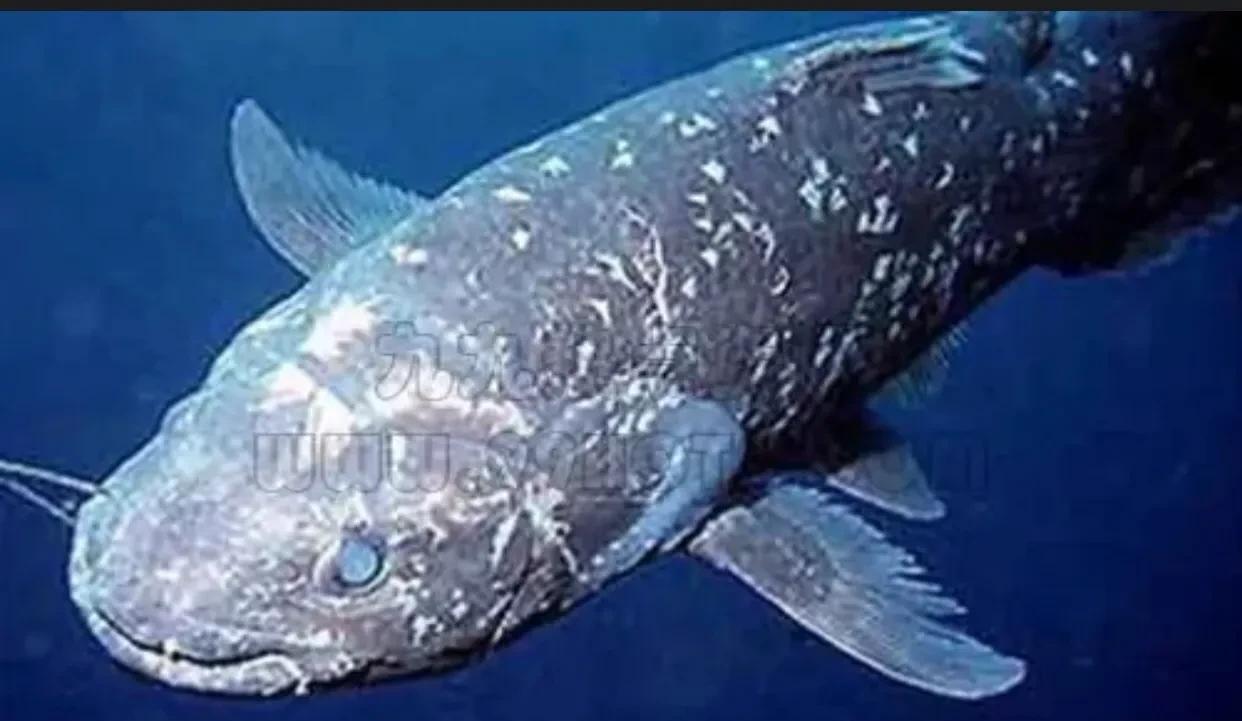#头号运动玩家 #
There are currently more than 26,000 species of fish known worldwide, of which 8,600 are freshwater fish, and the rest are marine fish. Fishing is not only a pleasure, but also a certain amount of catch to satisfy your appetite, but also to know a lot of fish that you didn't know before.

Speaking of the ocean, sea fishing is popular in our country, conquering the sea is the desire of many anglers, deep sea fishing, is even more so. Why are anglers so keen on sea fishing? In addition to conquest and catch, it is also a very important reason to want to know the sea.
Because, as evidence from existing archaeological studies shows that some of the terrestrial animals evolved from marine life, these studies can only rely on fossils. Now there is a fish that can provide scientists with a good physical evolutionary study, and it is the coelacanth! A fish that is thought to have long since become extinct.
Fossils of coelacanths have been unearthed and formed between the end of the Permian period (295 million years ago) and the early Cretaceous period (144 million years ago). According to research, coelacanths first appeared 377 million years ago, when they were extremely abundant on Earth, and were long believed to have become extinct about 60 million years ago.
It wasn't until 1938 that the perception of the fish was finally broken, and it turned out that the fish had not yet become extinct (or rediscovered).
The modern coelacanth is a deep-sea fish of the family Speartail, named after the hollow spines of the fins. It is significantly larger than most fossil species that have been discovered. It is a ferocious predator, thick and mucous, with limb-like fins and flexible movements. Brightly colored and easy to distinguish. There are at least two known species, the Indonesian Echidna, which is distinctly different from the Comorian Echinos, with the latter being blue and the former being brown.
Coelacanth is the oldest of all fish species today, and is one of no other living fossils of aquatic organisms that evolved into terrestrial organisms. It also lives in a wide range of seas. At first it was thought to exist only in the eastern waters of Africa, and finally in the Indian Ocean.
One day in 1938, in the sea near East London in South Africa, a trawler caught a large glaucoma about two meters long. The fish's scales cover the whole body like armor, and the pointed head of the fish is also unusually hard, the most eye-catching is its chest and abdomen. Each grows two shark fins that are completely different from other fish, both large and thick, like the limbs of an animal.
Due to the weak consciousness of the fishermen at that time, this strange fish was not specially protected, but it was mixed with other catches and transported directly back to the port, and stacked on the dock as a catch.
Fortunately, it was discovered by the museum staff at the time, and then the experts quickly rushed to the port. Unfortunately, the coelacanth is eaten by the fishermen as ordinary marine fish, leaving only some bones, fat fins and still glowing scales.
Although the bones, fish scales, and shark fins have been preserved, which has helped to study coelacanth fish, it is sad to lose a complete research object.
After a gap of 14 years, in 1952, another coelacanth was rediscovered, proving that it was still alive in the world. It was not until 1955 that at least 15 more were found at a time, and it was finally confirmed that at least two species of coelacanth of the same genus were still alive. It was most recently discovered in 1998 and in 1999 and 2007.
As mentioned at the beginning of the article, animals on land evolved from the ocean. Frogs, for example, lay their eggs in the water, form tadpoles and then grow four legs, recede their tails and enter land life. But the coelacanth is more special, it is from an aquatic animal without limbs, in the process of evolution to land animals, has grown limbs "legs" but returned to the ocean to live, I don't know why.
Coelacanth is a deep-sea fish whose living depth is thought to be between 150 and 270 meters. But the 2007 caught coelacanth shattered the perception that the coelacanth was caught at a depth of 107 metres. As long as sea anglers know that these water depths are suitable depths for deep sea fishing. Therefore, many anglers say that in the future, when fishing in the sea, they will pay attention to this fish, and then accidentally catch this fish and release it resolutely, or submit it to scientific research units for research.
Coelacanth, which had long been thought to be extinct, was suddenly found to be still alive in the ocean, and at least two species existed, which was quite large. This surprise brings better research to our scientists, and what kind of research will it bring us? Only slowly will we know. However, as an angler, the protection of fish is a responsibility, and in case of mistake, release is the first option.
The best news is that some conservation work on coelacanth is already being implemented. For example, the Convention on International Trade in Endangered Species orders a ban on the trade in coelacanth. For now, a new conservation measure may soon take effect: The National Marine Fisheries Service (NMFS) proposed in early March to list coelacanth as a "near-threatened" species under the Endangered Species Act (ESA).
Final advice: As a fisherman, environmental protection is the responsibility of every angler! Please take away the garbage around you and create a beautiful fishing environment! If there are different views or the author is wrong, you can correct it in the comment area. I'm Fishing Bell Dang, remember to follow me! Thank you